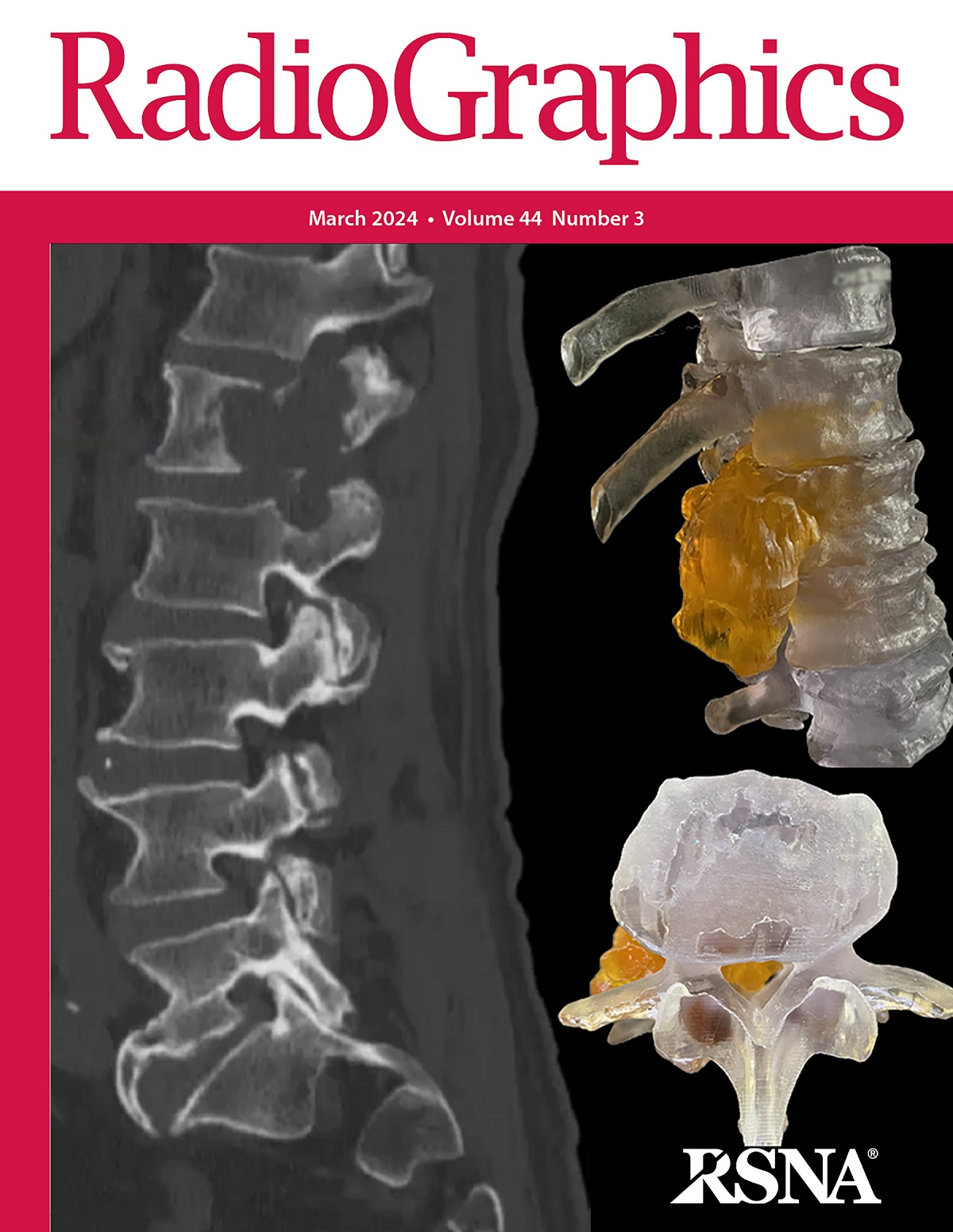求助PDF
{"title":"冠状动脉血管炎和包膜:多模态成像发现与模仿。","authors":"Claire F Woodworth, Ryan C Yee, Scott Harris, Phillip M Young, Philip A Araoz, Jeremy D Collins","doi":"10.1148/rg.240009","DOIUrl":null,"url":null,"abstract":"<p><p>Coronary artery vasculitis (CAV) and coronary artery encasement are rarely diagnosed conditions that are important diagnostic considerations, particularly in patients with acute coronary syndrome without traditional cardiovascular risk factors or systemic illness. <i>Vasculitis</i> refers to inflammation of the blood vessel walls, which can be primary or secondary. This process should be distinguished from neoplastic involvement of the coronary arteries, termed <i>coronary artery encasement</i>. Prospective diagnosis of these diseases is challenging, often requiring multidisciplinary workup with careful attention to clinical presentation and multiorgan findings. While CAV and coronary artery encasement can be indistinguishable at coronary CT angiography, certain imaging features help order the differential diagnosis. CAV should be considered when there is smooth wall thickening that is circumferential and/or continuous. A diagnosis of coronary artery encasement is favored when there is irregular or nodular wall thickening that is eccentric to the vessel lumen. Epicardial fat stranding may also appear more extensive compared with CAV. Potential mimics of CAV include atherosclerosis, acute plaque rupture, coronary artery aneurysm, and spontaneous coronary artery dissection. Detection and diagnosis of CAV may help avoid complications related to accelerated atherosclerosis and infarction. Radiologists should be familiar with the range of pathologic conditions that can affect the coronary arteries beyond atherosclerosis as they may be the first to raise such diagnostic possibilities, guiding next steps in patient workup and management. <sup>©</sup>RSNA, 2024 Supplemental material is available for this article.</p>","PeriodicalId":54512,"journal":{"name":"Radiographics","volume":null,"pages":null},"PeriodicalIF":5.2000,"publicationDate":"2024-11-01","publicationTypes":"Journal Article","fieldsOfStudy":null,"isOpenAccess":false,"openAccessPdf":"","citationCount":"0","resultStr":"{\"title\":\"Coronary Artery Vasculitis and Encasement: Multimodality Imaging Findings and Mimics.\",\"authors\":\"Claire F Woodworth, Ryan C Yee, Scott Harris, Phillip M Young, Philip A Araoz, Jeremy D Collins\",\"doi\":\"10.1148/rg.240009\",\"DOIUrl\":null,\"url\":null,\"abstract\":\"<p><p>Coronary artery vasculitis (CAV) and coronary artery encasement are rarely diagnosed conditions that are important diagnostic considerations, particularly in patients with acute coronary syndrome without traditional cardiovascular risk factors or systemic illness. <i>Vasculitis</i> refers to inflammation of the blood vessel walls, which can be primary or secondary. This process should be distinguished from neoplastic involvement of the coronary arteries, termed <i>coronary artery encasement</i>. Prospective diagnosis of these diseases is challenging, often requiring multidisciplinary workup with careful attention to clinical presentation and multiorgan findings. While CAV and coronary artery encasement can be indistinguishable at coronary CT angiography, certain imaging features help order the differential diagnosis. CAV should be considered when there is smooth wall thickening that is circumferential and/or continuous. A diagnosis of coronary artery encasement is favored when there is irregular or nodular wall thickening that is eccentric to the vessel lumen. Epicardial fat stranding may also appear more extensive compared with CAV. Potential mimics of CAV include atherosclerosis, acute plaque rupture, coronary artery aneurysm, and spontaneous coronary artery dissection. Detection and diagnosis of CAV may help avoid complications related to accelerated atherosclerosis and infarction. Radiologists should be familiar with the range of pathologic conditions that can affect the coronary arteries beyond atherosclerosis as they may be the first to raise such diagnostic possibilities, guiding next steps in patient workup and management. <sup>©</sup>RSNA, 2024 Supplemental material is available for this article.</p>\",\"PeriodicalId\":54512,\"journal\":{\"name\":\"Radiographics\",\"volume\":null,\"pages\":null},\"PeriodicalIF\":5.2000,\"publicationDate\":\"2024-11-01\",\"publicationTypes\":\"Journal Article\",\"fieldsOfStudy\":null,\"isOpenAccess\":false,\"openAccessPdf\":\"\",\"citationCount\":\"0\",\"resultStr\":null,\"platform\":\"Semanticscholar\",\"paperid\":null,\"PeriodicalName\":\"Radiographics\",\"FirstCategoryId\":\"3\",\"ListUrlMain\":\"https://doi.org/10.1148/rg.240009\",\"RegionNum\":1,\"RegionCategory\":\"医学\",\"ArticlePicture\":[],\"TitleCN\":null,\"AbstractTextCN\":null,\"PMCID\":null,\"EPubDate\":\"\",\"PubModel\":\"\",\"JCR\":\"Q1\",\"JCRName\":\"RADIOLOGY, NUCLEAR MEDICINE & MEDICAL IMAGING\",\"Score\":null,\"Total\":0}","platform":"Semanticscholar","paperid":null,"PeriodicalName":"Radiographics","FirstCategoryId":"3","ListUrlMain":"https://doi.org/10.1148/rg.240009","RegionNum":1,"RegionCategory":"医学","ArticlePicture":[],"TitleCN":null,"AbstractTextCN":null,"PMCID":null,"EPubDate":"","PubModel":"","JCR":"Q1","JCRName":"RADIOLOGY, NUCLEAR MEDICINE & MEDICAL IMAGING","Score":null,"Total":0}
引用次数: 0
引用
批量引用


